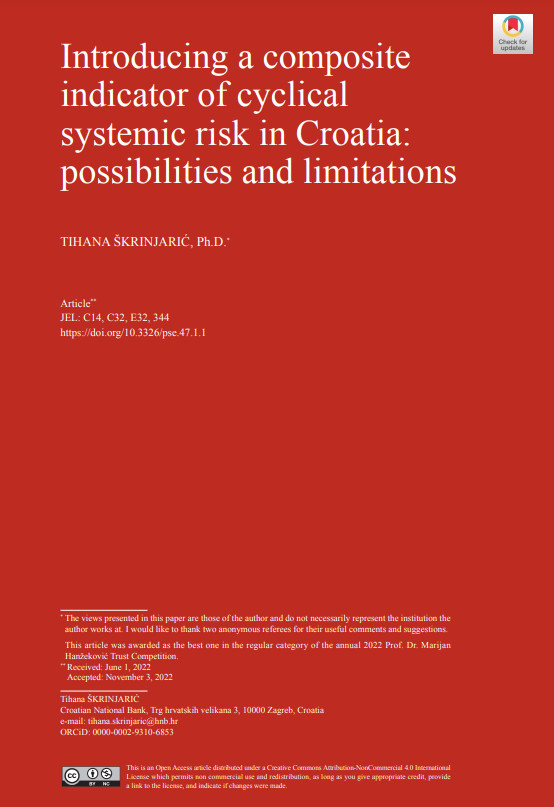Introducing a composite indicator of cyclical systemic risk in Croatia: possibilities and limitations
DOI:
https://doi.org/10.3326/pse.47.1.1Keywords:
cyclical risk, macroprudential policy, composite indicator, systemic riskAbstract
This research deals with several approaches to constructing a composite indicator of cyclical systemic risk accumulation with a specific focus on Croatia. Such indicators are important in macroprudential policymaking, in order to track the position of the economy in the financial cycle. Moreover, the countercyclical capital buffer (CCyB) depends on the timely and accurate estimation of cyclical risk accumulation. The credit gap as defined in the BCBS (Basel Committee on Banking Supervision) and the ESRB (European Systemic Risk Board) guidance and recommendation has shown many flaws in practice. Thus, there is a need for improvement of the methodology. That is why this paper deals with the advantages and shortfalls of existing composite indicators of cyclical systemic risks and the possibilities of introducing them in Croatia. This research contributes to a critical overview of the methodological approaches, with suggestions for their improvement, focusing particularly on the specifics of Croatian data.

Downloads
Published
How to Cite
Issue
Section
License
Copyright (c) 2023 Tihana Škrinjarić

This work is licensed under a Creative Commons Attribution-NonCommercial 4.0 International License.








